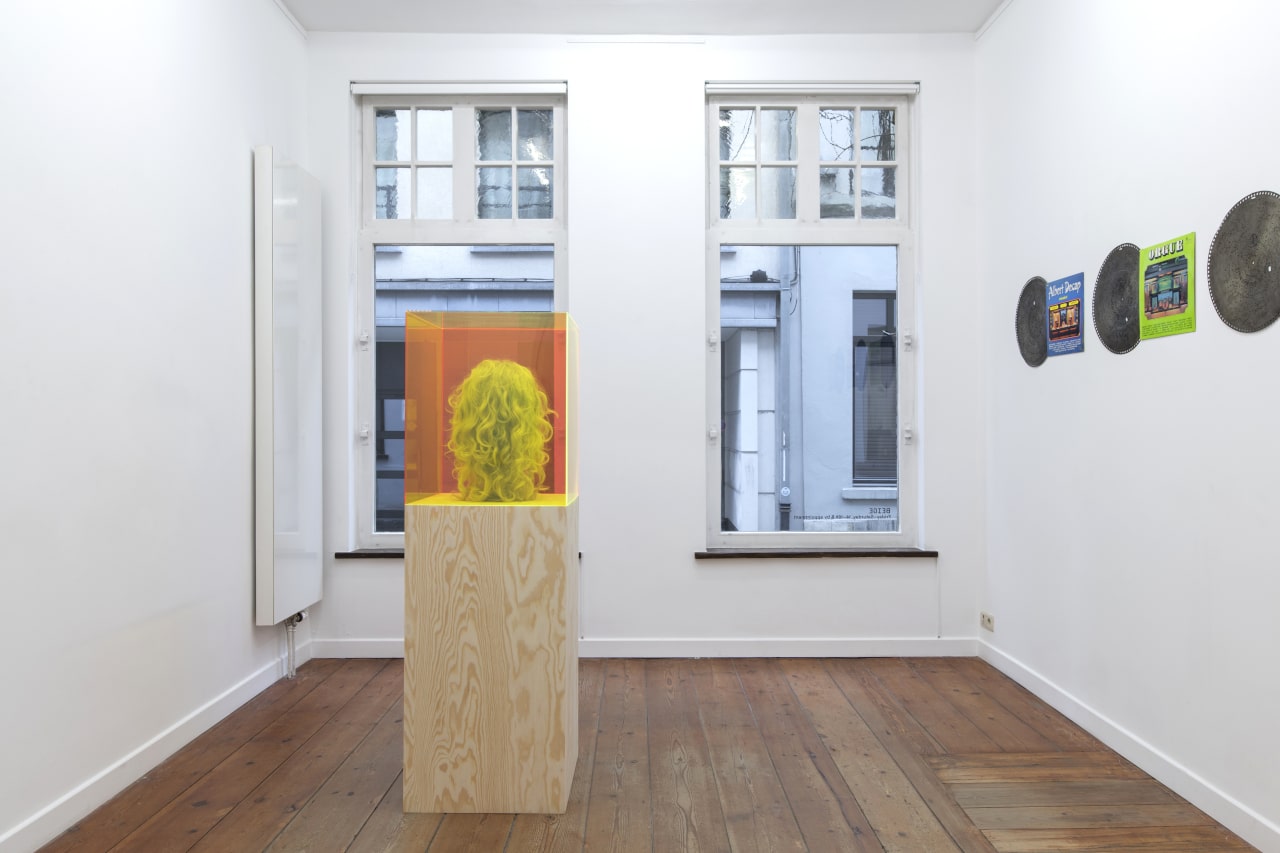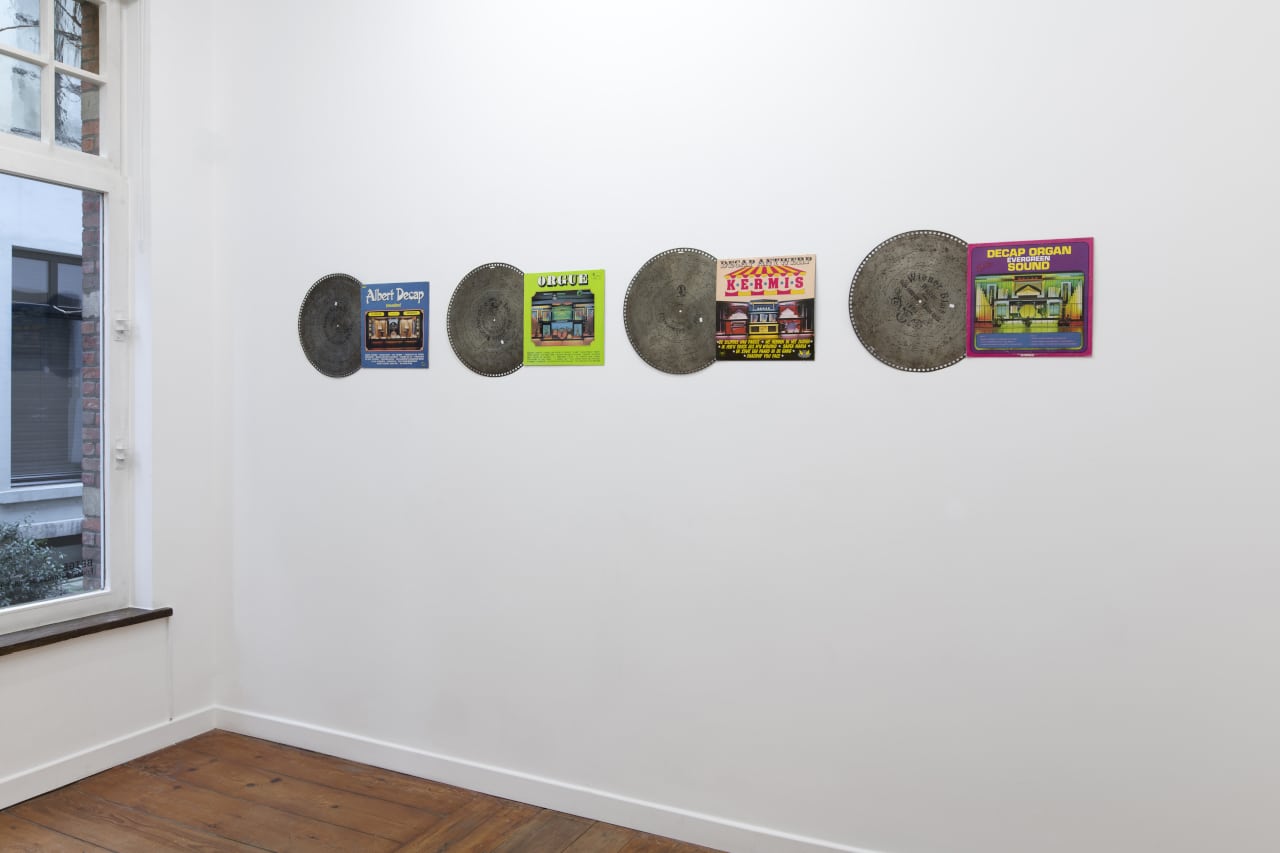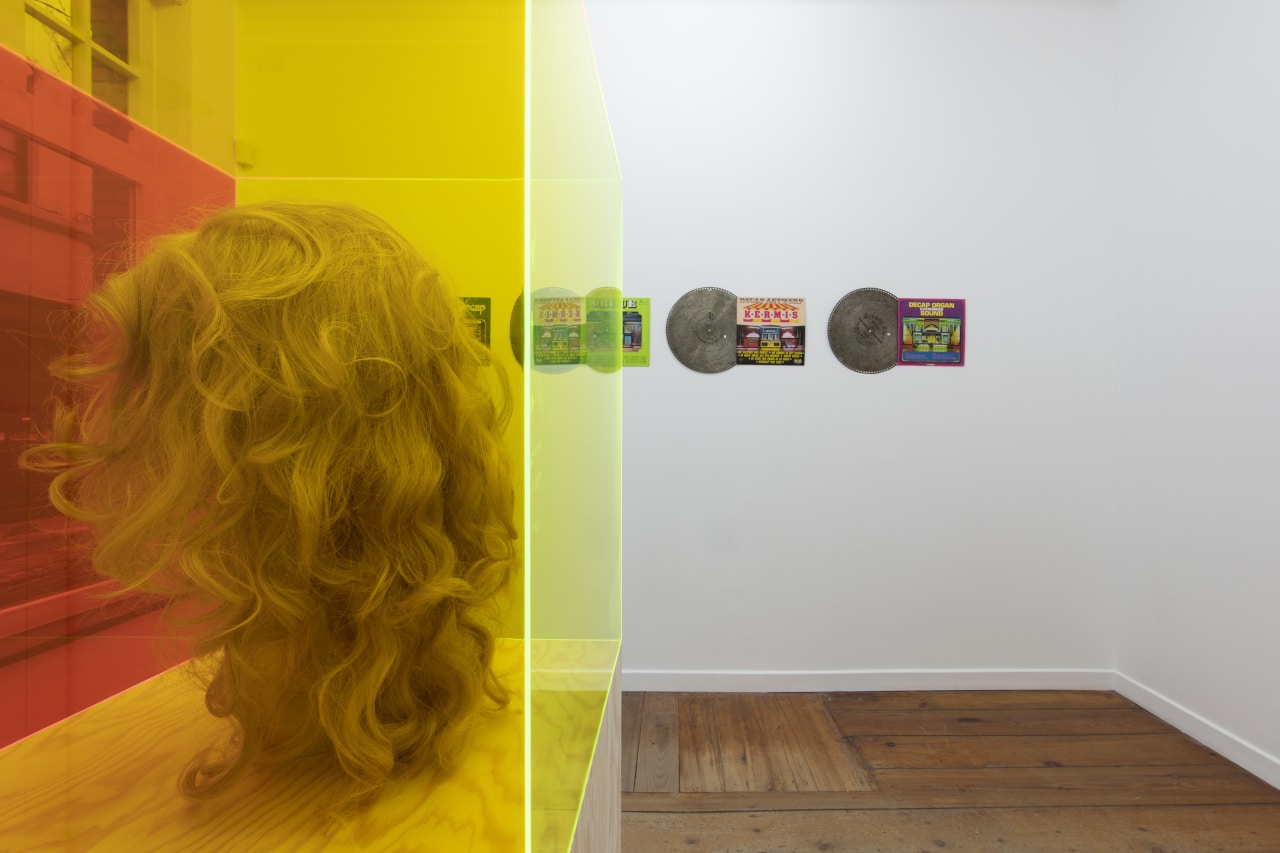Beige is pleased to announce the exhibition: Hocus Pocus, with works by Jurgen Ots and Heidi Voet.
Jurgen Ots gives new life to objects by turning them over, seeking them out and experimenting with them in assemblages. For the exhibition Hocus Pocus, Ots worked with the representation of the folkloric music tradition, combining record covers of mechanical orchestras and metal disks made for music boxes. His material, found on flea markets, is consistently turned into the archeologic domain of human communication, language, images and identity. The works in this show present six record covers paired with a metal music disk. The disks and the LPs refer to a nostalgic time, presenting a world that is gone which lives only through this manufacts: in this series we can observe the theatrical and the kitsch juxtaposed with the austere and rusty. As the LP covers for the records of the massive Decap organs are beginning to fade, the musical discs have already become obsolete to the point it is for us hard to imagine the melodies they produced. The titling of the works – a pastiche of the inscriptions found on both elements of each piece – becomes a playful attempt to reconstruct their intended use and original place in the world through association of meanings, opening entryways and portals to the organ rooms pictured in the covers and multiplying the spaces within the gallery.
The work of Heidi Voet investigates the position of an individual within contemporary societies, embedded in cultural, historical and universal structures. Her practice illustrates this interconnectivity through the use of everyday objects comprising her sculptures and installations, thus linking the individual to the larger entity. Starting from hacked personal data, Heidi Voet presents for the exhibition at Beige two sculptures, two stolen and reconstructed identities, two possible outcomes of the same dataset. These life-size sculptural portraits are comprised of a vase, representing the female and the domestic, and a cast of a ball, representing the male and the public domain, covered by a wig meticulously imitating the hairstyle of the presumed victim. Their elements share a complex relationship, both the vase and the ball are reproductions – the vase is a copy, and the ball is cast – made redundant and cold; whereas the wig is on surface realistic and seductive, and quickly becoming uncanny. The sculptures are turned away from the viewer and placed in a multi-colored display, rendering the true colors and materials invisible and alienating the viewer’s gaze.
Jurgen Ots lives and works in Brussels. Most recent exhibitions include: CC Strombeek, Brussels 2021; Biennale de Curibita, 2020; Cabaret Voltaire, Zurich, 2019; Walker Art Center, Minneapolis, 2018; BOZAR, Bruxelles, 2018; Gemeinde Museum, 2010.
Heidi Voet had recent solo exhibitions at BANK, Shanghai, 2022; Project Fulfill Art Space Taipei, 2020; Sint-Lukas gallery Brussels, 2018. She participated in group exhibitions as Beaufort21 Triennale, 2021; CHAT Center for Heritage, Art and Textile Hong Kong, 2019; S.M.A.K. Ghent, 2017; 11th Shanghai Biennale, Shanghai, 2016; Center for Contemporary Art Vilnius; and Wiels Brussels, 2008.







